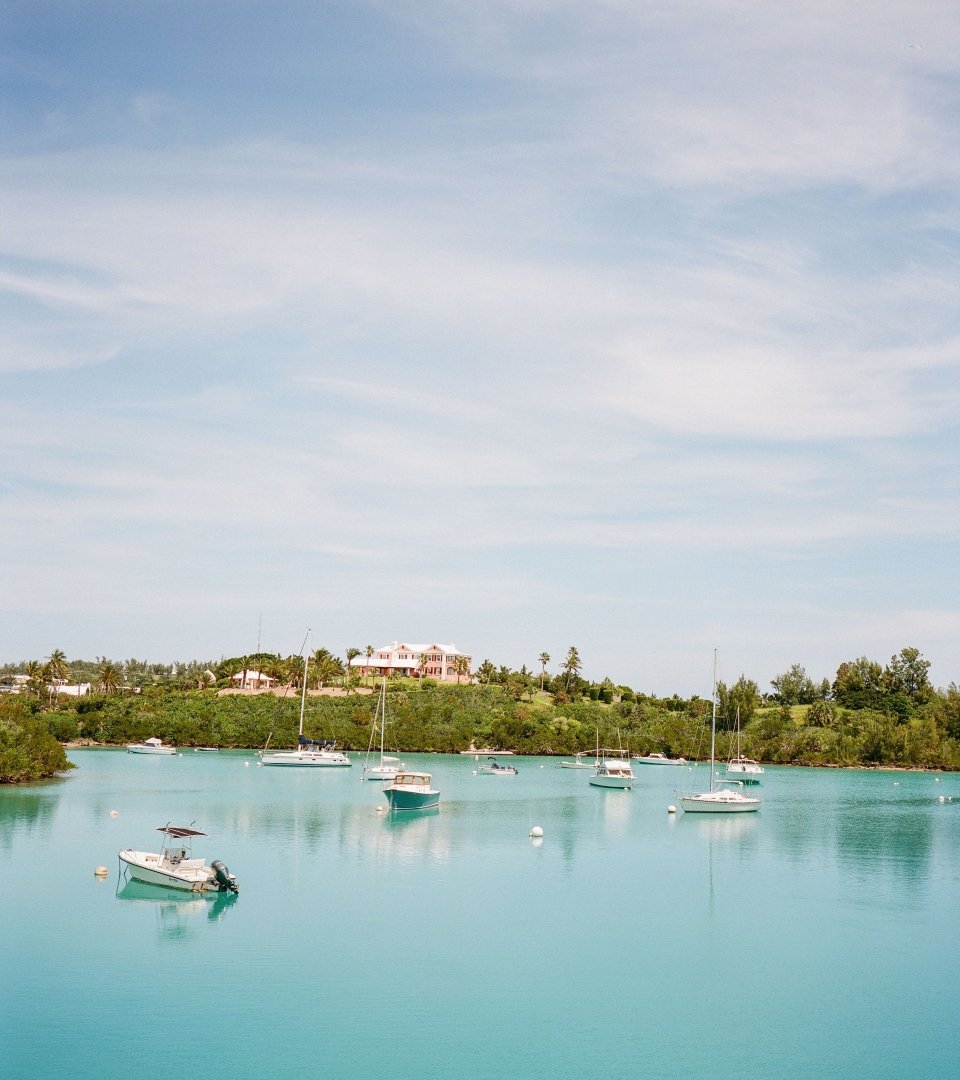Bermuda’s Wonderful Wildlife
Bermuda is teeming with incredible wildlife on the land, in the sea, and high above in the sky. Whether you’re snorkelling along Bermuda’s vibrant coastline or getting lost in the island’s nature reserves, there are endless opportunities to spot wildlife on your island getaway.
- Natural Wonders

Our wildlife helps make Bermuda so incredibly special, and we work diligently to protect it. Take a look at some of Bermuda’s most unique and beloved wildlife, and we’re sure you’ll agree — nature is at the heart of our island.
THE CAHOW
We must start this unique wildlife list with Bermuda’s National Bird! Commonly known as the Cahow, the Bermuda Petrel is a pelagic seabird that spends most of its life in the open water. This elusive bird was believed to have been extinct for nearly 300 years until it was found in 1951, and conservationists have worked to bring this species back from the brink ever since. Today, there are more than 330 known cahows in the world, and it’s sometimes possible to see them in flight from Cooper’s Island Nature Reserve in St. George’s.

PARROTFISH
Have you ever wondered why Bermuda’s sand is blush-pink? Well, you can thank Bermuda’s Parrot Fish, one of the island’s most recognisable underwater species. They eat red foraminifera, a form of marine plankton, which is later excreted as pink sand. These aquatic creatures produce up to 200 pounds of sand every year!
This Protected Species are commonly seen along the island’s shoreline, and Bermuda is the only place they’ll be seen in large herds. Book your snorkelling tour with Captain Kirk’s Coral Reef Adventures or Island Tour Centre to swim among these colourful creatures.

HUMPBACK WHALE
The best time to spot these magnificent species in Bermuda’s waters is from March to April as they migrate to Canada, Greenland, and Iceland. These gigantic whales can grow up to 18 metres long, with their pectoral fins growing up to 4.5 metres.
Head out on a whale-watching tour with KS Watersports, Fantasea Bermuda, and Island Tour Centre, or try to spot them along the coastline from South Shore clifftops such as St. David’s Head, Cooper’s Island, Portuguese Rock at Spittal Pond Nature Reserve, and South Shore Road between Warwick Long Bay and Church Bay.

SEA TURTLES
In 1620, Bermuda passed its first law to protect sea turtles, which may have been the first ever written conservation legislation in the New World. The law prohibited the catching and killing of immature turtles that measured less than 18 inches across or around the shell. Today, the Bermuda Turtle Project works to promote and conserve marine turtles through research and education.
The most commonly seen sea turtle species in Bermuda’s waters is the green turtle, which can be spotted in seabass green beds. The hawksbill turtle can be found on coral reefs around the island, and the loggerhead turtles are occasionally seen offshore. Book an excursion on Bermuda Reef Explorer’s double-decker glass-bottom boat to see the island’s sea turtles in their natural habitat. Head to the Bermuda Aquarium and Zoo to see their green turtle exhibit and learn more about the Bermuda Turtle Project.

LONGTAIL
Although the longtail isn’t Bermuda’s national bird, it may be the island’s most cherished for visitors and locals alike. The Bermuda longtail, also known as the white-tailed tropic bird, is a relatively large bird and can measure up to 76 centimetres and has a wingspan of up to 90 centimetres.
It is an open ocean species that only comes to the land to feed and breed. They first appear around Bermuda in late February and early March, representing the first sign of spring for Bermudians. About 2,500 to 3,000 pairs of Longtails spend the spring and summer on the island’s rocky cliffs and offshore islands. If you want to go birdwatching to spot the longtail, take a walk along South Shore Park where you can see them flying along our limestone cliffs.

BERMUDA SKINK
The Bermuda skink, also known as the Bermuda rock lizard, is one of the rarest lizards in the world and lives right here on the island. Adult males and females can be identified by their shiny brown or black body scales, pale belly and an orange throat patch. Meanwhile, juvenile lizards have coppery scales, pale bellies, and black and cream-coloured stripes running down both sides of their body. Baby skinks have bright blue tails, which they use to confuse predators, and will be regrown if they’re bitten off.

BERMUDA TREE FROG
If you’ve visited Bermuda before, you will recognise the whistling night call of the Bermuda tree frog that will put you right to sleep. However, you will often hear these creatures before you see them — if you see them at all. That’s because they’re only about the size of a thumbnail! Bermuda has two species of tree frogs — the Eleutherodactylus johnstonei and Eleutherodactylus gossei.

COMMON OCTOPUS
Although these creatures are native to Bermuda, they can be hard to find because they are active from dusk into the night and are an incredibly shy species. Consider yourself lucky if you spot these elusive marine creatures.
SARGASSUM
Sargassum is a brown seaweed from the Sargasso Sea with berrylike air bladders, typically forming large floating masses. The seaweed can be home and a protector to many small creatures such as shrimp, crabs, and juvenile fish, and is essential to our ecosystem.

BERMUDA BUCKEYE BUTTERFLY
This migratory butterfly is Bermuda’s only endemic butterfly, and can only be found in Bermuda. They prefer open, sunny areas with low vegetation and some bare ground. The Bermuda Buckeye can be identified by its light olive-brown hue, yellowish-white marks at the tip, and one large eyespot towards the hind margin with a second small eyespot towards the wing tip.

KISKADEE
The kiskadee is one of Bermuda’s larger land animals, reaching up to 25 centimetres. They have a white and black cap, a black band through the eye, a distinct bright yellow belly, and a reddish brown black. This birdlife makes a distinctive, loud sound which sounds much like “kis-ka-dee”. The kiskadee population is vast, and the birds occupy every habitat, from the coast to woodland and urban areas.

FIND YOURSELF IN BERMUDA'S NATURAL BEAUTY
Are you ready to get lost and spot wonderful wildlife in Bermuda? Explore the island’s underwater world on a diving or snorkelling excursion, plan an eco-adventure to discover the island’s cherished nature reserves and lush landscapes, and book your getaway to our 21-square-mile slice of paradise.

-
Beyond the Beach, Natural Wonders
-
Adventure, Beyond the Beach, Natural Wonders, On the Beach, Travel Tips
-
Natural Wonders, On the Beach
-
Natural Wonders, On the Beach, Travel Tips
-
Natural Wonders, On the Beach
-
Natural Wonders
-
Natural Wonders
-
Diving, Itineraries, Natural Wonders













